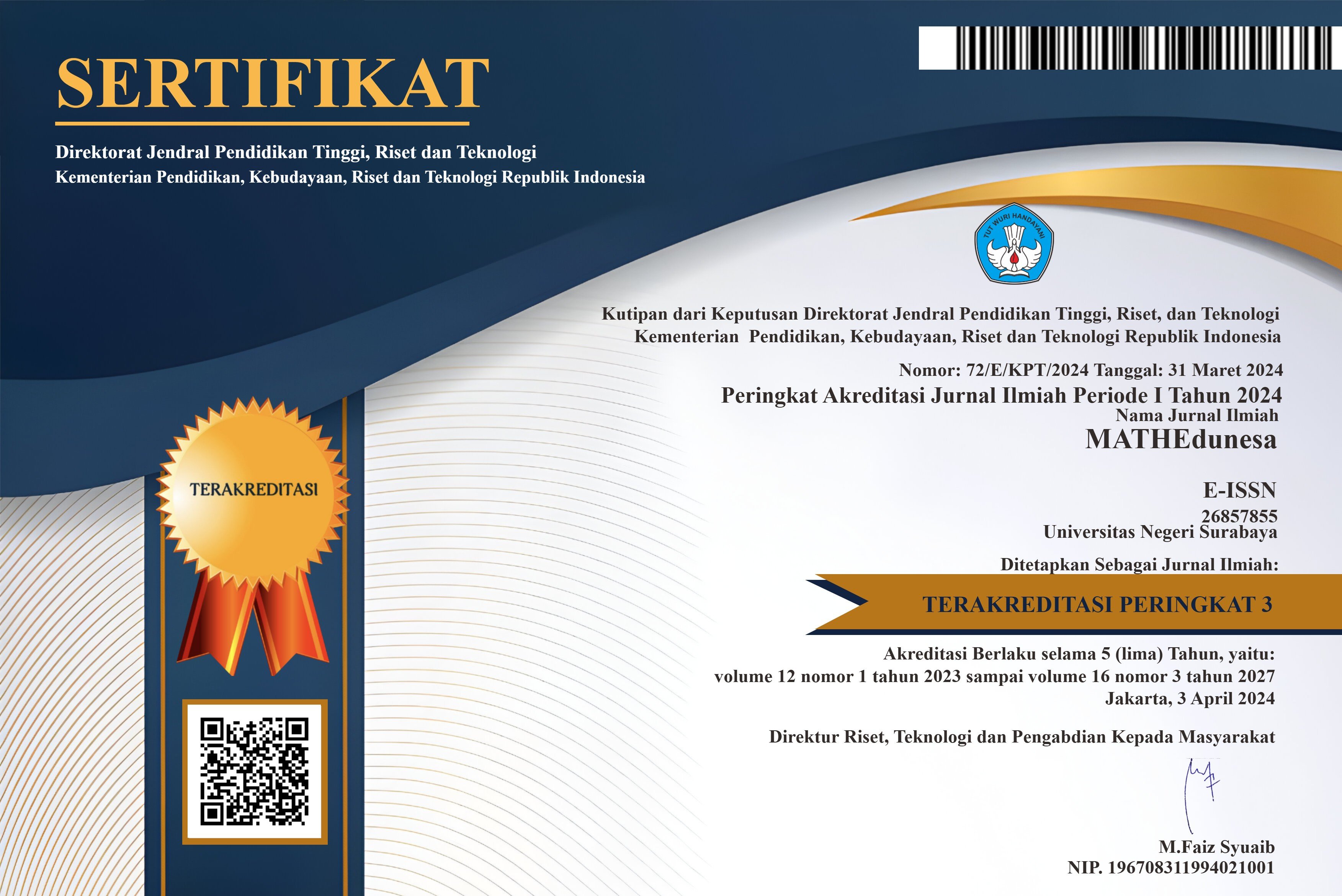Penalaran Analogi Peserta Didik SMP dalam Menyelesaikan Dua Masalah dengan Kesamaan Permukaan Rendah
DOI:
https://doi.org/10.26740/mathedunesa.v12n3.p834-857Abstract
Analogical reasoning is a process of identifying two problems that aim to produce knowledge by associating relevant concepts and facts and adapting them so that they can solve more complex problems. Low surface similarity does not play a significant role in solving analogical reasoning. This type of research was carried out descriptively with qualitative methods with the aim of describing students' reasoning in solving analogy problems with low surface similarity. The research was conducted at one of the junior high schools in Sidoarjo with three selected students. Research data were analyzed using indicators that had been made by researchers. The data from the research results gave rise to three students who have uniqueness in analogical reasoning. There are two peculiarities found, namely the peculiarities with general cases and the peculiarities with special cases. The low surface similarity in analogy problems has an impact on students in the form of different stages of analogical reasoning that are passed by the three students. Students with general characteristics have stages of linear analogy reasoning. Students with special case characteristics have dynamic analogical reasoning stages. Identifying is done by students by identifying characteristics and concluding the relationship between the two problems. Mapping is done by students by mapping information related to analogy problems. At the time of applying the answers to the source problem to the target problem, there were two students with special characteristics who returned to the previous stage because they found it difficult. Verifying has been done by each student, but students with special cases have beliefs that are contrary to the results of the answers. So, the use of source problems and target problems that have low surface similarities can be used with the condition that the structure of the answers between the two problems must be analogous to each other.
Downloads
Downloads
Published
Issue
Section
 Abstract views: 190
,
Abstract views: 190
, PDF Downloads: 220
PDF Downloads: 220




